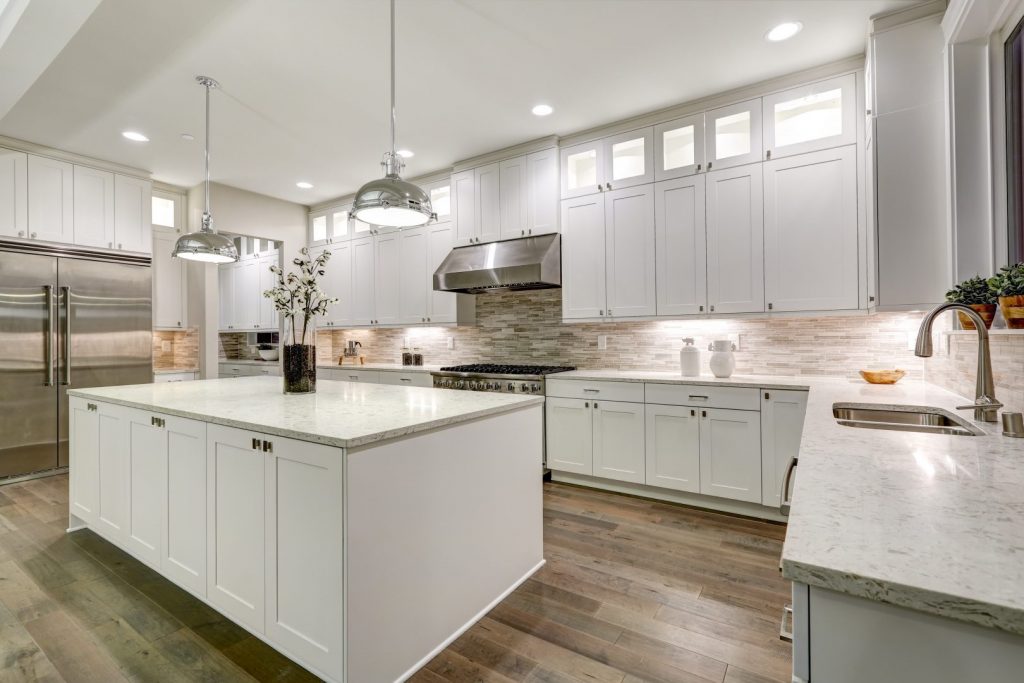
The kitchen is a prime example within the home of how important it is to have sufficient lighting available for safety and the many activities that occur there
Potential is just that – something that can or might occur but likely won’t without some other force or action intervening or stimulating it. We have it before we tee up and strike that golf ball or before we begin our regular (or perhaps occasional) jog. We have it when we arrive at the tennis or pickleball court. Potential energy – that stored up action that is ready to be tapped, unleased, and directed at a specific place and time to produce the desired force and hopefully result we are aiming to achieve.
Potential energy is a great resource, but it does nothing for us until it is converted into kinetic energy and actually applied and directed toward an object. Think of a box of cereal. It is just sitting there with plenty of potential to provide energy and nutrition for us, but it can’t do anything while the contents remain in the box, The box needs to be opened and the cereal consumed by us for it to do what it has the capacity to do in helping us.
So much of what we can do for our clients falls into this potential energy category. We have the ability to evaluate their living space from both a structural viability standpoint and that of their physical needs, and then to match us the two observations or just to focus on either one of them.
We may have an app on our phone, tablet, or notebook that enables us to perform a checklist, take photographs, and compose a report for our clients, but it can’t operate itself. It’s a tool for us to use that only becomes helpful once we begin using it. Potential energy that we convert to results.
Similarly, we may have a form or checklist that we like to use to guide us through our observations and assessments of a client’s dwelling space and how well they are able to use their home. This form does us no good until we actually apply it to the client’s home and note what is going on there. Then we can use this tool to help us create solutions to recommend to our clients.
When we approach a client’s home, we are going to be making some instant observations of what we want to address – walkways, steps, porch, access points, lighting, and general safety factors. However, those observations do us little good in helping the client if we don’t factor them into our plan of action. Now, it could be that there are other higher priorities that need to be addressed, and that the budget does not allow us to suggest everything that we would want to see modified, Nevertheless, our observations are the beginning. Then we share these with the client and ultimately include them in our proposal for the client to approve.
There are other tools as well that we not immediately think of as tools. They are the products and solutions that we use to meet the needs of our clients. If we don’t offer them to our clients they remain potential treatments and not ones that will help our clients live more easily in their space.
Often we think of tools as something that we use or control to make things happen. That’s true, but the products and solutions that we are able to offer our clients are tools also. They enable us to provide the upgrades, modifications, and renovations necessary for our clients to enjoy their space more and to function in it more easily.
Of the biggest and most notable tools we have is lighting. This makes such a visible difference in the clients home and promotes safety and well-being when we are able to supplement the lighting they have now and upgrade it to a more efficient system. We begin by replacing all older style lights with LED fixtures and bulbs. We are sensitive to the color preferences of the client and can design accordingly, but the LED lighting means more light output in the space, brighter lights, less harshness and hot spots, more even illumination, less eye fatigue, and more variety in the styles and locations of the lighting fixtures (including inside cabinets and closets, in toe-kick areas and soffits, and other places where traditional fixtures were not as welcome).
Additionally, LED lights are sustainable, with many of the bulbs rated at a lifespan of more than twenty years. This means that people won’t need to store as many replacement bulbs and have to worry about reaching higher fixtures to replace burned out bulbs. It also means that the lights can be left on much longer – even all the time if so desired – because they require so little energy to operate them. This can contribute to safer homes also because occasional darker or obscured areas within a home have the potential for being reduced or eliminated with more constant and uniform lighting.
